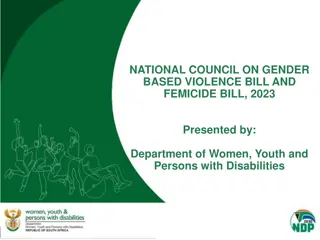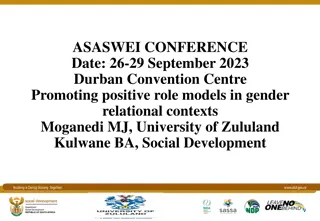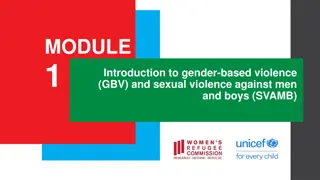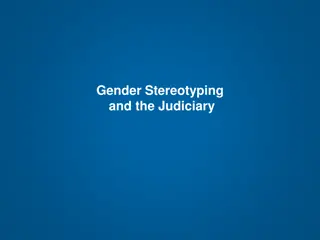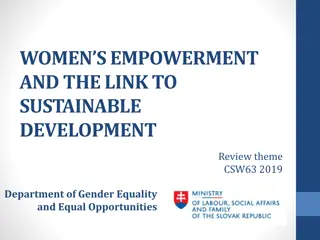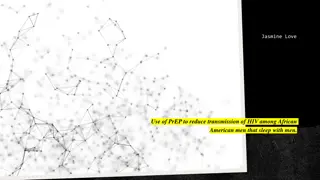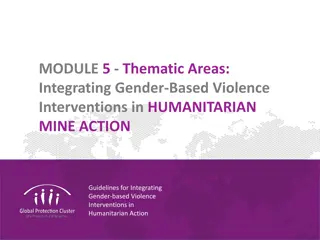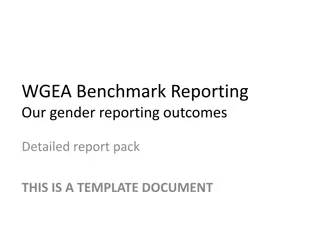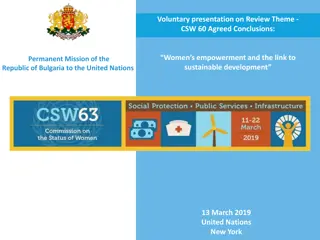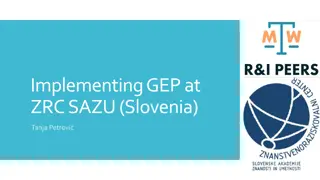Understanding Gender-Based Violence, HIV, and Engaging Men for Equality
Exploring the intersection of gender-based violence, HIV, and the involvement of men and boys in achieving gender equality is crucial for a sustainable response to HIV and AIDS. Addressing harmful gender norms, inequality, and violence is essential for effective HIV prevention, especially in key populations. Lessons learned from global consultations highlight the importance of political support, stakeholder involvement, and inclusive media campaigns in countries like Cambodia despite facing barriers like fund allocation and technical support.
Download Presentation

Please find below an Image/Link to download the presentation.
The content on the website is provided AS IS for your information and personal use only. It may not be sold, licensed, or shared on other websites without obtaining consent from the author. Download presentation by click this link. If you encounter any issues during the download, it is possible that the publisher has removed the file from their server.
E N D
Presentation Transcript
Learning journey Part 1: Welcome and introduction Part 2: Concepts, evidence, and good practice: Addressing gender-based violence and engaging men and boys for gender equality in the context of HIV Part 3: Policy to practice, practice to policy Part 4: Identifying key priorities and developing country action plans
An iterative journey Share expertise Develop action plan Key concepts Identify priorities Key evidence Analyze policy Good practice Utilize tools
Lessons Learned from the first global consultation on: Integrating Strategies to Prevent Gender-based Violence and Engage Men and Boys to Achieve Gender Equality through National Strategic Plans on HIV and AIDS 30thNovember 2ndDecember 2010, Nairobi
Understanding the gender dimensions of HIV, the links between gender- based violence and HIV, and the potential of men and boys as partners for gender equality from the perspective of planning, programming, and monitoring and evaluation, helps to foster a sustainable response to HIV and AIDS. Effective action for HIV prevention requires concerted and far-reaching efforts to challenge and change harmful gender norms and inequality between women and men, as well as focused action to make community environments safer, especially for young women and girls, with attention to women and girls in diverse communities. HIV prevention also requires addressing how gender dynamics and the risk of gender-based violence affects people in key populations, such as sex workers and their clients, people who inject drugs, and men who have sex with men and their female partners. Gender-based violence is a significant driver of HIV rendering women more vulnerable to HIV, and reducing women s ability to protect themselves from HIV. Gender-based violence is also a consequence of HIV, with a particular impact on women living with HIV. Violence against positive women is any act, structure or process in which power is exerted in such a way as to cause physical, sexual, psychological, financial or legal harm to women living with HIV.
CAMBODIA Achievements Increased political support, involvement and participation through a High Level Meeting organized in March 2011 aiming at increasing political commitment to address the challenges of gender inequality to reducing the vulnerability of women and girls to HIV infection. Developed a Stakeholders on Gender and HIV Directory as a contact database in enhancing networking amongst Gender and HIV stakeholders in Cambodia as well as capturing ongoing collaborative efforts in engendering HIV and AIDS interventions. Messages on Gender and HIV have been included in public media and/or campaigns partnering and in collaboration with civil society organizations. For instance, a radio/TV drama entitled " Lotus in the Muddy Lake" has been developed to address Gender norms, Gender based Violence and HIV sexual risk reduction. What were the most significant barriers of non-implemented elements? No specific allocation of funds for gender responsive HIV that match with political commitment Lack of technical backstopping to support gender mainstreaming efforts at various levels
JAMAICA Build capacity and skills for women in leadership in communities. Civil Society Partner JASL trained 30 HIV positive women Engage men and boys in gender, GBV and HIV dialogue. 2 sessions with Men of the NHP, NAC and Civil Society Jamaican Community of Women Living with HIV launched the Men s Space to ensure men who have sex with women are included in the support for HIV positive women Address the link between GBV and HIV and actions to address GBV. Consultation started. 1 meeting held and actions identified. Barrier: Adding to existing work with budget and added human resource New Strategic Plan 2013-2017 seeks to give more attention to GBV
Overview / introduction on the Nairobi consultation as a whole, including what was the outcome, challenges taking things forward, and how we can learn from this for the Istanbul consultation Drawing on country presentations to identify potential keys to success, challenges, opportunities, and barriers to integrating attention GBV and the engagement of men and boys for gender equality into National Strategic Plans on HIV and AIDS Looking forward



